In the rapidly evolving landscape of electric vehicles, the Dacia Spring and the MG MG4 stand out as notable contenders, each offering their own unique blend of features, performance, and innovation. As more consumers shift their focus towards sustainable transportation, let's delve into the details that distinguish these two models in a head-to-head comparison.
Dacia Spring vs MG MG4 – Which car suits you better?
Compare performance, boot capacity, efficiency and price at a glance.
Find out which car is the better choice for you – Dacia Spring or MG MG4?
Design and Dimensions
The Dacia Spring is a compact SUV with practical dimensions tailored for urban driving. It measures 3701 mm in length, 1583 mm in width, and stands 1519 mm high. Its design is simple yet functional, aiming to provide an economical driving experience. The five-door configuration offers easy access to its interior, which accommodates up to four passengers relatively comfortably compared to more spacious alternatives.
On the other hand, the MG MG4 presents itself as a modern electric hatchback with a sportier appeal. Its dimensions are larger, measuring 4287 mm long, 1836 mm wide, and varying heights of 1504 to 1516 mm depending on the variant. The hatchback's design blends aesthetics and aerodynamics, highlighting its intent to attract a younger audience eager for both performance and style.
Powertrains and Performance
When it comes to powertrains, the Dacia Spring offers two variants with power ratings of 44 HP (33 kW) and 65 HP (48 kW). With its front-wheel drive layout, it provides an electric range between 225 km and 228 km on a full charge, aided by a compact 26.8 kWh battery. Acceleration from 0 to 100 km/h takes around 19.1 seconds for the lower variant and 13.7 seconds for the more powerful option. This makes the Spring a suitable choice for city dwellers seeking low-speed commuting rather than high-performance drives.
The MG MG4 takes power and performance to another level with options ranging from 170 HP (125 kW) to a remarkable 435 HP (320 kW). Boasting both rear-wheel and all-wheel-drive setups, it can achieve impressive acceleration times, with the quickest variant reaching 100 km/h in just 3.8 seconds. The range also significantly exceeds that of the Spring, with options delivering electric ranges from 350 km to 520 km, thanks to battery capacities ranging from 49 kWh to 74.4 kWh.
Efficiency and Charging
The Dacia Spring's energy consumption is commendably low, averaging 14.1 to 13.2 kWh/100 km. This efficiency is crucial for budget-conscious consumers, as it allows for reduced operational costs in urban environments. As an eco-friendly choice, it also boasts a CO2 efficiency class of A, highlighting its zero-emission potential.
In contrast, the MG4 has a slightly higher consumption rate, typically around 16 to 18.7 kWh/100 km depending on the variant. However, this is balanced out by its significantly larger battery capacity, which enables it to travel much farther on a single charge. The MG4 is designed to cater to a wider range of user needs, making it a feasible option for longer journeys.
Interior Space and Technology
Inside the Dacia Spring, you will find a functional and straightforward cabin layout, designed primarily with efficiency and utility in mind. The trunk space, at 308 liters, is adequate for light travel but not class-leading, especially when compared to its competitors. The vehicle focuses on essential technology that enhances the driving experience without overwhelming users.
Conversely, the MG4’s interior aims to impress with a blend of modern technology and comfort. While it offers seating for five, the hatchback theme allows for a spacious feel. Trunk capacity stands at 350 to 363 liters, offering ample room for luggage or groceries. Technological features are abundant, including advanced infotainment systems, connectivity options, and driver-assistance technologies that make driving both enjoyable and safe.
Conclusion: Which One to Choose?
Both the Dacia Spring and the MG MG4 have their strengths and weaknesses, making them appealing to distinct demographics. The Spring is a budget-friendly electric option catering to urban commuters, focusing on practicality and efficiency. In contrast, the MG4 stands out with superior performance, extended range, and cutting-edge technology, appealing to those seeking a more dynamic driving experience.
Ultimately, the choice between the Dacia Spring and the MG MG4 comes down to individual requirements. Urban drivers who prioritize cost-effective commuting may lean towards the Spring, while those desiring performance and modern features should undoubtedly consider the MG4.
Here’s where it gets real: The technical differences in detail
Costs and Efficiency:
Price and efficiency are key factors when choosing a car – and this is often where the real differences emerge.
Dacia Spring has a decisively advantage in terms of price – it starts at 14500 £, while the MG MG4 costs 30500 £. That’s a price difference of around 16063 £.
In terms of energy consumption, the advantage goes to the Dacia Spring: with 13.20 kWh per 100 km, it’s noticeable more efficient than the MG MG4 with 16.40 kWh. That’s a difference of about 3.20 kWh.
As for range, the MG MG4 performs significantly better – achieving up to 450 km, about 222 km more than the Dacia Spring.
Engine and Performance:
Power, torque and acceleration are the classic benchmarks for car enthusiasts – and here, some clear differences start to show.
When it comes to engine power, the MG MG4 has a convincingly edge – offering 204 HP compared to 65 HP. That’s roughly 139 HP more horsepower.
In acceleration from 0 to 100 km/h, the MG MG4 is clearly quicker – completing the sprint in 7.10 s, while the Dacia Spring takes 13.70 s. That’s about 6.60 s faster.
In terms of top speed, the MG MG4 performs evident better – reaching 160 km/h, while the Dacia Spring tops out at 125 km/h. The difference is around 35 km/h.
There’s also a difference in torque: MG MG4 pulls convincingly stronger with 250 Nm compared to 125 Nm. That’s about 125 Nm difference.
Space and Everyday Use:
Whether family car or daily driver – which one offers more room, flexibility and comfort?
Seats: MG MG4 offers a bit more seating capacity – 5 vs 4.
In curb weight, Dacia Spring is decisively lighter – 1013 kg compared to 1635 kg. The difference is around 622 kg.
In terms of boot space, the MG MG4 offers somewhat more room – 363 L compared to 308 L. That’s a difference of about 55 L.
In maximum load capacity, the MG MG4 performs decisively better – up to 1765 L, which is about 761 L more than the Dacia Spring.
When it comes to payload, MG MG4 noticeable takes the win – 449 kg compared to 302 kg. That’s a difference of about 147 kg.
Who wins the race?
The MG MG4 proves to be dominates this comparison and therefore becomes our DriveDuel Champion!
MG MG4 is the better all-rounder in this comparison.
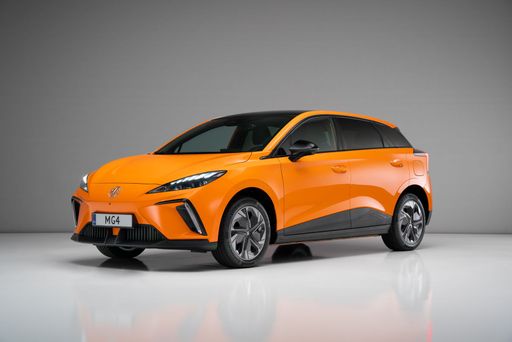
MG MG4
Dacia Spring
The Dacia Spring stands out as an affordable and environmentally friendly option in the electric vehicle market, combining practicality with a compact design ideal for urban settings. Its minimalist interior, while basic, provides all the essential features needed for a comfortable drive, reflecting its cost-effective approach. The vehicle's performance suits city driving, making it an appealing choice for those seeking an entry-level electric car.
details @ dacia-presse.de
@ dacia-presse.de
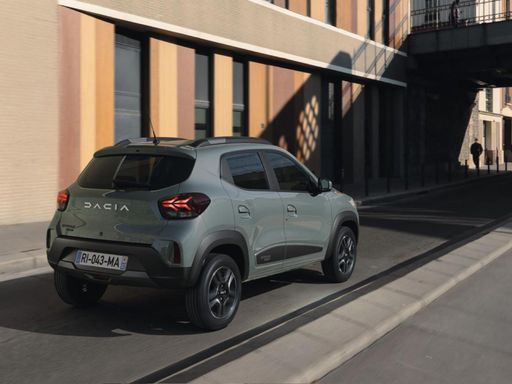 @ dacia-presse.de
@ dacia-presse.de
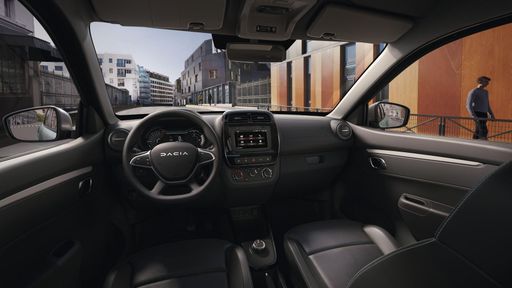 @ dacia-presse.de
@ dacia-presse.de
MG MG4
The MG MG4 stands out in the electric vehicle market with its sleek design and competitive pricing. It offers an impressive blend of advanced technology and practicality, making it a strong contender for eco-conscious drivers. The interior is both spacious and comfortable, providing a pleasant driving experience for both short commutes and longer journeys.
details @ news.mgmotor.eu
@ news.mgmotor.eu
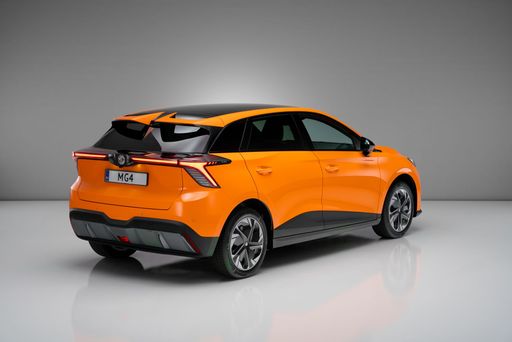 @ news.mgmotor.eu
@ news.mgmotor.eu
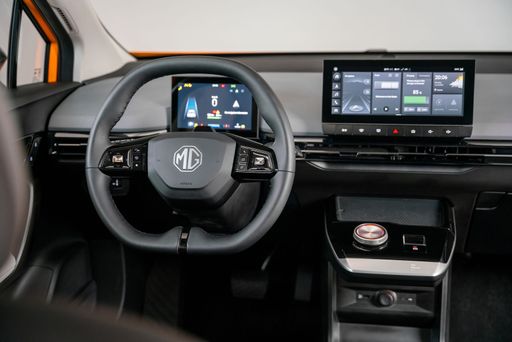 @ news.mgmotor.eu
@ news.mgmotor.eu
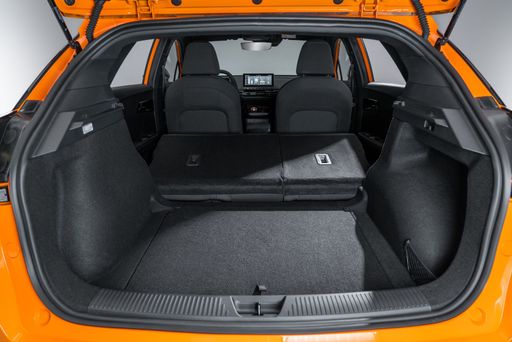 @ news.mgmotor.eu
@ news.mgmotor.eu

|

|
|
|
|
Costs and Consumption |
|
|---|---|
|
Price
14500 - 17100 £
|
Price
30500 - 36500 £
|
|
Consumption L/100km
-
|
Consumption L/100km
-
|
|
Consumption kWh/100km
13.2 - 14.1 kWh
|
Consumption kWh/100km
16.4 - 17 kWh
|
|
Electric Range
225 - 228 km
|
Electric Range
330 - 450 km
|
|
Battery Capacity
26.80 kWh
|
Battery Capacity
49 - 61.7 kWh
|
|
co2
0 g/km
|
co2
0 g/km
|
|
Fuel tank capacity
-
|
Fuel tank capacity
-
|
Dimensions and Body |
|
|---|---|
|
Body Type
SUV
|
Body Type
Hatchback
|
|
Seats
4
|
Seats
5
|
|
Doors
5
|
Doors
5
|
|
Curb weight
1013 - 1050 kg
|
Curb weight
1635 - 1695 kg
|
|
Trunk capacity
308 L
|
Trunk capacity
350 - 363 L
|
|
Length
3701 mm
|
Length
4287 mm
|
|
Width
1583 mm
|
Width
1836 mm
|
|
Height
1519 mm
|
Height
1504 - 1516 mm
|
|
Max trunk capacity
1004 L
|
Max trunk capacity
1165 - 1765 L
|
|
Payload
265 - 302 kg
|
Payload
389 - 449 kg
|
Engine and Performance |
|
|---|---|
|
Engine Type
Electric
|
Engine Type
Electric
|
|
Transmission
Automatic
|
Transmission
Automatic
|
|
Transmission Detail
Reduction Gearbox
|
Transmission Detail
Reduction Gearbox
|
|
Drive Type
Front-Wheel Drive
|
Drive Type
Rear-Wheel Drive
|
|
Power HP
44 - 65 HP
|
Power HP
170 - 204 HP
|
|
Acceleration 0-100km/h
13.7 - 19.1 s
|
Acceleration 0-100km/h
7.1 - 7.6 s
|
|
Max Speed
125 km/h
|
Max Speed
160 km/h
|
|
Torque
113 - 125 Nm
|
Torque
250 Nm
|
|
Number of Cylinders
-
|
Number of Cylinders
-
|
|
Power kW
33 - 48 kW
|
Power kW
125 - 150 kW
|
|
Engine capacity
-
|
Engine capacity
-
|
General |
|
|---|---|
|
Model Year
2024
|
Model Year
2025
|
|
CO2 Efficiency Class
A
|
CO2 Efficiency Class
A
|
|
Brand
Dacia
|
Brand
MG
|
What drive types are available for the Dacia Spring?
The Dacia Spring is available as Front-Wheel Drive.
The prices and data displayed are estimates based on German list prices and may vary by country. This information is not legally binding.
